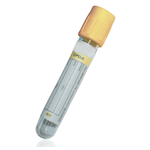Suitable Specimen Types
- Serum
Sample Processing in Laboratory
UsualSample Preparation
CentrifugeTurnaround Time
2 daysSample Stability
4 ºC prior to analysis for up to 3 days.Complement C3
General Information
Activation of the complement system takes place via a classical and an alternative route. The two pathways come together in a joint terminal path. As complement factor C3 is a factor common to both pathways, the concentration of C3 and its degradation products (including C3c) can be evaluated as a parameter for activation of the complement system.
Lowered values are indicative of activation. Additional differentiation can be made by determining C4. If the C4 level is normal, then activation of the alternative route is likely. Depressed values are observed in a number of inflammatory and infectious diseases. Primary causes are systemic lupus erythematosus (SLE), rheumatoid arthritis, subacute bacterial endocarditis, viremia, parasitic infections or bacterial sepsis. A considerable decrease in C3 can be found in patients with partial lipodystrophy or membranoproliferative glomerulonephritis when the C3-nephritis factor is present.
As an acute phase protein, C3 is produced to an increased extent during inflammatory processes. It is elevated in systemic infections, non-infectious chronic inflammatory conditions (primarily chronic polyarthritis) and physiological states (pregnancy). The elevation rarely exceeds twice the normal value and can mask a reduction in the current consumption.
Patient Preparation
None
Notes
No significant interference from icterus, haemolysis or lipaemia. There is no interference from Rheumatoid factor up to 1200 IU/mL.
Reference Range
0.75-1.65 g/L
Specifications
- EQA Scheme?: Yes
- EQA Status: NEQAS
